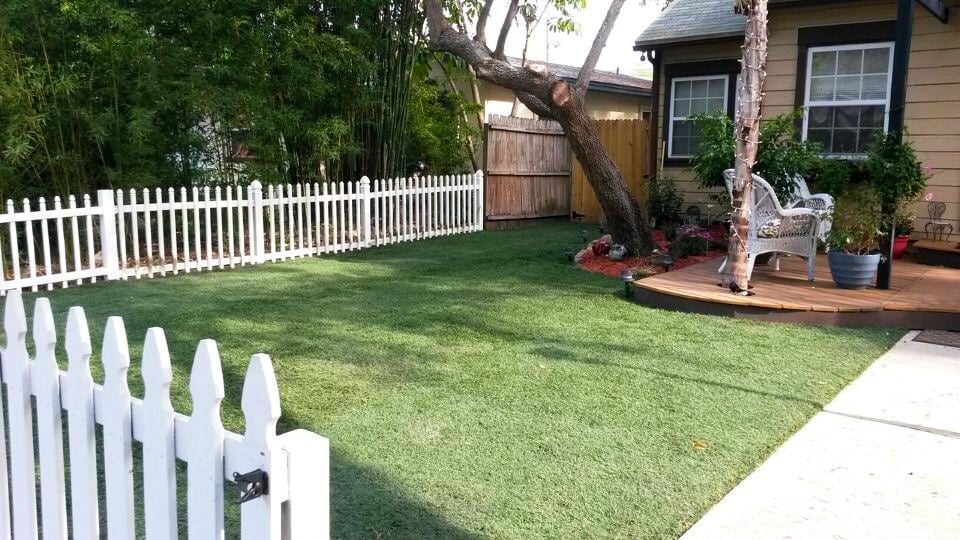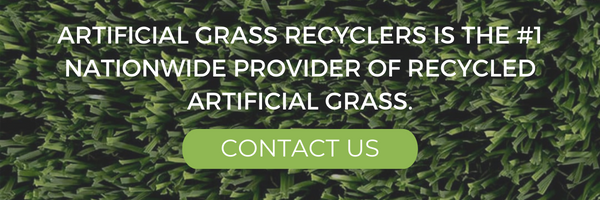When you decide whether or not to opt for artificial grass, the fact that it needs very little maintenance is sure to be one of the big plus points in its favor. Yet, you may not be completely sure about how suitable this grass is when it rains heavily.
The good news is that high quality artificial turf is perfect for use in any type of weather. Even if the rain comes pouring down for days on end, this isn’t going to cause problems in your garden provided that you understand the basics.
Get the Drainage Right
A big benefit with synthetic grass is that it offers terrific drainage even when the weather is wet and wild for a sustained period. There is no risk of big puddles of water forming and staying there in the way that they can on natural grass areas.
To make sure that you make the most of the drainage offered by artificial grass, you need to start by getting it laid correctly. This is something that you can do on your own if you want, provided that you understand how to do it with good drainage.
Artificial grass is porous and drains as well, if not better, than natural grass. Therefore, the key lies in laying it on top of the right kind of base and just allowing it to drain on its own.
In fact, you might be extremely surprised as just how quickly the rain drains away. It is also possible to use the garden again right away once the rain stops, as there will be no muddy patches or pools of water for you to worry about.
Indeed, you can even carry on using it during a rainstorm if you are protected from the rain. This means that it is an ideal setting for arranging an outdoor party, planning a family barbeque, or setting up any sort of special event if you have a way of keeping the guests dry and entertained.

Let the Rain Wash It
Assuming that your synthetic turf is laid correctly, then it will look great and also provide excellent drainage. This means that you will simply allow the rain to wash it and then run off naturally.
In this way, you allow the rain to wash your artificial grass whenever it pours down. This is a fine way of keeping your garden looking perfect without having to really do anything at all in terms of maintenance.
On the other hand, if there is a dry spell, you just need to hose the grass down every now and then to keep it clean and looking fantastic. Either way, you don’t need to worry about whether it looks like it is going to rain or not in terms of keeping your garden looking as good as possible.
Brush It Upright If Needed
There is a possibility that a period of heavy rain might leave your artificial lawn looking rather flattened. This is something that is more likely to happen when someone has been lying on the grass for a long time, but plants and grass can also be flattened by sustained, torrential rain as well.
Thankfully, this is something that can be sorted out very quickly and easily once the rain subsides. To do this you can gently brush the grass to make it stand up on its own easily enough.
By grooming your artificial turf with a brush in this way, you can also ensure that it doesn’t end up matted over time and that the infill doesn’t get compacted. Just keep an eye out for any flattened patches and then fix them as quickly as you can.
This is also a good time to mention the good value aspect of recycled artificial grass. This is turf that costs less simply because it has been used and then recycled for use by someone else, making it more of an environmentally friendly approach as well.
Remove Anything Soggy That Gets Stuck
If there is anything left out in the grass during the rain, then there is a chance that it can get soggy and end up stuck to the lawn. This could happen with bits of food, cardboard, or anything else that lays on it during a downpour and then gets forgotten about for a while.
In most cases, rubbish can simply be lifted up off the lawn and disposed of without any sort of hassle, even when it is soggy. However, it might be that you need to use a blunt knife or some other tool to help you remove the object completely.
In the case of awkward stuff like chewing gum getting stuck to the lawn, you could use soap with warm water or a mixture of water and vinegar to loosen it effectively. However, the best idea is to take a look after the rain stops and remove any debris before it gets a chance to dry out and get firmly lodged anywhere.
What about Snow and Ice?
You will soon be reassured to see that even the heaviest rainfall doesn’t cause any damage to your artificial lawn. Yet, you might be worried that snow and ice could prove to be a tougher test for the grass over time.
There is no need to worry, though, as snow and ice will just melt and drain away like rain if you leave it there until the temperature rises. Of course, if you want to use the lawn for some reason and it hasn’t yet cleared through melting, then you might want to clear it away yourself.
The best way of doing this without risking any damage to the lawn is to take away just the top layer with a shovel. The last inch or so can then be swept away using just a brush without causing any damage to the lawn below it.
By following these simple and effective tips, you can make sure that your artificial lawn stays looking fantastic, even when it rains during most days.
February 22, 2017


